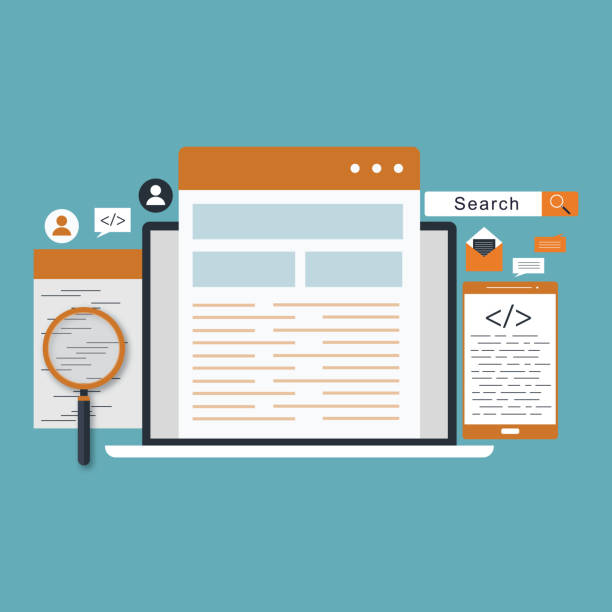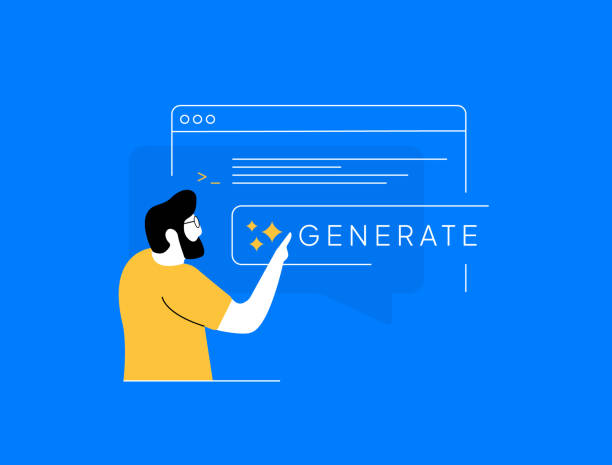Introduction to the Importance of SEO-Optimized Website Design in the Digital Age

In today’s digital world, where competition for visibility is at its peak, merely having a beautiful website is not enough.
Your website must be accessible, load quickly, and be easily understood by search engines.
This is where the concept of #SEO_Optimized_Website_Design comes in.
SEO, which stands for “Search Engine Optimization”, is a vital process for improving your website’s ranking in search results.
An SEO-optimized website design is not just about filling text with keywords, but a comprehensive approach that encompasses all technical, content, and user experience aspects of the site.
Without SEO, even if you offer the best services or products, your potential customers may never find you.
This is especially crucial in the Iranian market, where #Online_Success is heavily dependent on #Google_Ranking.
The ultimate goal of SEO-optimized website design is to increase organic traffic and attract visitors who are actively searching for your products or services.
This type of traffic, due to its high quality and targeted nature, significantly increases the likelihood of conversion into customers.
Imagine setting up a luxury store in the desert; without access roads and signboards, no one will know of its existence.
Your website is exactly the same.
Without a strong SEO strategy, even if you have fantastic content and attractive visual design, like that store in the desert, it will remain in anonymity.
Therefore, investing in SEO and implementing it from the very initial stages of website design is an undeniable necessity for any online business.
This proactive approach not only reduces marketing costs in the long run but also provides a stable platform for online growth and development.
It’s not just about ranking; SEO is about improving the overall user experience.
Search engines like Google are looking to provide the best and most relevant results to their users.
Therefore, websites that offer a better user experience (load faster, are more accessible, and have higher quality content) rank higher.
This is a win-win game; both for users who get access to the information they need, and for business owners who attract targeted traffic and loyal customers.
In the rest of this article, we will delve into various aspects of an SEO-centric website design and guide you step-by-step through the process of optimizing your website.
Are you worried about losing customers because you don’t have a professional e-commerce site?
With e-commerce website design by Rasaweb, forget these worries!
✅ Significant increase in sales and visitor-to-customer conversion rate
✅ Professional and user-friendly design that builds customer trust
⚡ Get free consultation from Rasaweb
Technical Pillars in SEO-Centric Website Design
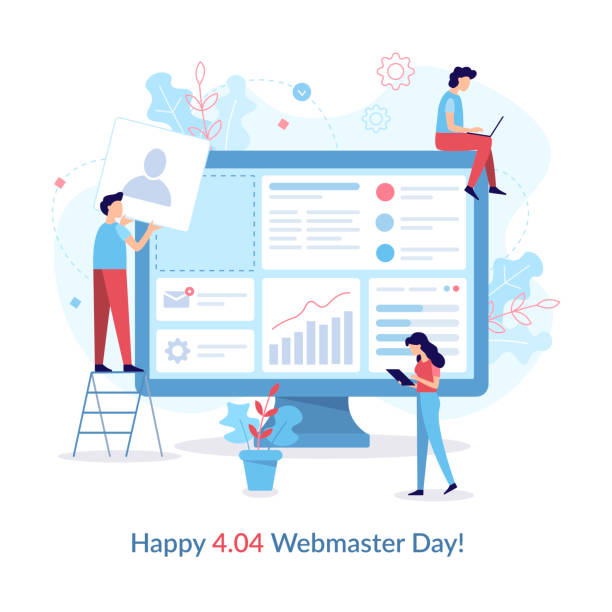
The foundations of an SEO-optimized website originate from its technical aspects.
Without a proper technical infrastructure, your content and link-building efforts will never reach their full potential.
One of the most important of these pillars is site loading speed.
Today’s users are impatient, and if your site doesn’t load in less than a few seconds, they will leave.
Google also attaches special importance to this and considers site speed as a crucial ranking factor.
Image optimization, code compression (CSS, JavaScript, HTML), and the use of Content Delivery Networks (CDN) are among the solutions for increasing speed.
Another fundamental requirement in SEO-centric website design is its responsiveness (Responsive Design).
Given the significant increase in mobile usage for internet access, your website must display and function well on all devices, from desktop computers to tablets and smartphones.
Google uses a Mobile-First Indexing approach, meaning it considers the mobile version of your site as the primary version for indexing and ranking.
Therefore, ensuring excellent site performance on mobile is crucial.
Site security using the HTTPS protocol is also a definitive ranking factor.
Google has explicitly stated that it prioritizes sites with SSL certificates and HTTPS.
This is not only important for SEO but also builds user trust, especially if your site collects sensitive user information or involves financial transactions.
Furthermore, optimized URL structures, the use of structured data (Schema Markup) to help search engines better understand content, creating an XML Sitemap to guide search bots, and a robots.txt file to control bot access to different parts of the site, are all vital technical tools in SEO-optimized website design that help search engines index and understand your site better.
These technical details may seem complex, but they are essential for the long-term stability and success of your website.
Content and Keyword Strategy for SEO-Optimized Website Design

Content is king, and this statement holds true in the world of SEO more than ever.
An SEO-optimized website design will never reach its full potential without high-quality and relevant content.
The first step in content strategy is keyword research.
This step helps you understand exactly what your target audience is looking for and what words they use to search for it.
Keyword research is not just about finding high-volume keywords, but also understanding the User Intent behind each search.
Is the user looking for information? Do they intend to buy? Or do they just want to learn something? The answers to these questions determine the type of content you should produce.
Creating comprehensive, unique, and valuable content for users is the beating heart of any search engine optimized website design.
Your content should not only be optimized for search engines but, more importantly, be engaging and useful for readers.
This includes blog articles, product pages, guides, videos, and infographics.
Keywords should be naturally embedded in the text and from “keyword stuffing” which was once common and is now penalized by search engines, should be avoided.
Long-Tail Keywords, which are more specific and targeted, can drive very high-quality traffic to your site.
Another important aspect is regular content updates.
Fresh and updated content not only shows search engines that your site is active and dynamic but also encourages users to return.
Internal linking, meaning linking from one page to another within the same website, also significantly helps SEO.
This helps search engines crawl and index your pages better and also transfers SEO value between your site’s pages.
Finally, your content structure is also important.
Using appropriate headings (H1, H2, H3), short paragraphs, lists, and images improves content readability and helps both users and search engines understand it better.
Here is a table for different content types and their SEO goals:
| Content Type | SEO Goal | Example |
|---|---|---|
| Blog Articles | Attracting organic traffic, proving expertise, answering questions | “10 Tips for SEO-Optimized Website Design” |
| Product/Service Pages | Converting users to customers, providing accurate information | Purchase page for “SEO-Centric Website Design Services” |
| Landing Pages | Lead generation, targeted advertising | Registration page for “SEO-Optimized Website Design Training” webinar |
| Infographics and Videos | Increasing engagement, natural link building, improving user experience | Infographic of website SEO steps |
User Experience (UX) and Its Role in Improving Website SEO
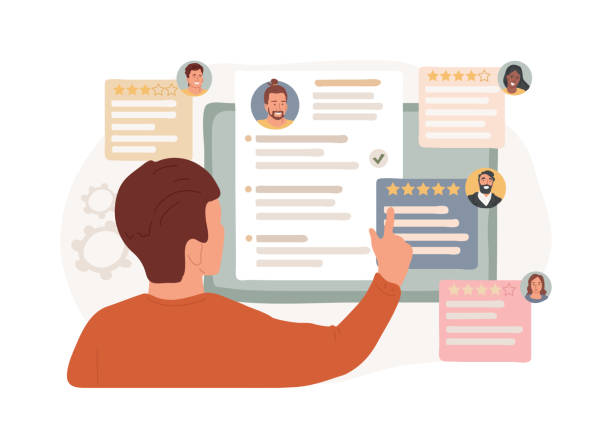
In recent years, search engines have increasingly focused on User Experience (UX) as a ranking factor.
Google aims to provide the best possible results to its users, and a website with a poor user experience, even with good content and strong technical optimization, cannot remain at the top ranks.
SEO-optimized website design is now heavily intertwined with UX principles.
An excellent user experience means that visitors can easily find the information they are looking for, navigate your site, and achieve their goals.
Bounce Rate and Dwell Time are two key UX metrics that directly affect SEO.
If users quickly leave your site (high bounce rate) or spend little time on it (low dwell time), this sends a negative signal to Google that your content is not relevant or engaging.
In contrast, a good UX design with intuitive navigation, attractive visual design, high readability, and optimal loading speed encourages users to stay longer on your site and view more pages.
These improvements indirectly help improve SEO ranking.
Other elements that play a role in UX and affect SEO include visual design (site’s look and feel), Accessibility for people with disabilities, Responsive Design (which was mentioned earlier), and clear and visible Call-to-Action (CTA).
For example, if a user is looking to buy a product and the purchase button is hard to find or the payment process is complicated, they will likely leave the site.
This not only leads to losing a customer but also sends negative signals to search engines that this site does not provide a good experience.
Therefore, in the process of website design with an SEO approach, paying attention to UX details and placing the user at the center of the design, is crucial.
This will lead to both increased user satisfaction and improved SEO performance.
Tired of losing customers due to poor e-commerce site design? With Rasaweb, solve this problem forever!
✅ Increase sales and visitor-to-customer conversion rate
✅ Smooth and engaging user experience for your customers⚡ Get a free consultation now!
Responsive Design and Mobile-First SEO
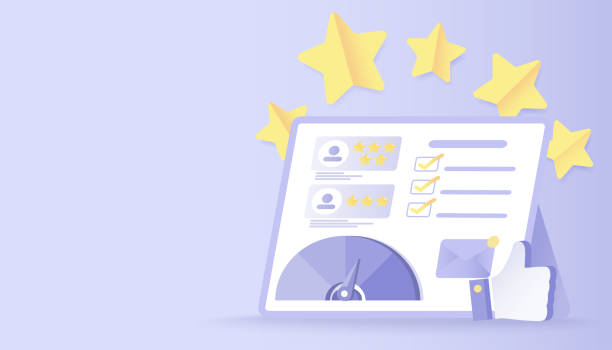
In past decades, the internet was primarily accessible via desktops, but today, a large portion of web traffic comes from mobile devices such as smartphones and tablets.
This change in user behavior has also transformed the approach of search engines.
Since 2018, Google has extensively launched its “Mobile-First Indexing” approach, meaning it considers your site’s mobile version as the primary version for indexing and ranking.
This significantly amplifies the importance of Responsive Design in the SEO-optimized website design process.
A responsive website automatically adapts its layout and content to the screen size of the device the user is using.
This means no need for separate designs for mobile and desktop, and it provides a consistent user experience.
If your site is not optimized for mobile, you may encounter issues such as very small text, unclickable buttons, jumbled images, or slow loading speeds on mobile devices.
These issues not only frustrate users but also severely damage your SEO ranking, as Google moves non-responsive sites lower in mobile search results.
To ensure excellent site performance on mobile and to have an SEO-centric website design, several points must be considered: using readable fonts, ensuring sufficient space between clickable elements, optimizing images for faster loading on mobile, and reducing the use of pop-ups that might disrupt the mobile user experience.
Tools like Google Search Console provide reports on your site’s mobile usability and identify potential weaknesses.
In summary, neglecting mobile SEO and responsive design means ignoring a large segment of the audience and missing countless opportunities in search results.
Investing in this area is a necessity for SEO-optimized website design and success in today’s competitive market.
Link Building and Increasing Domain Authority for Superior SEO

Link Building is one of the three main pillars of SEO (content, technical SEO, and link building) that plays a vital role in increasing your website’s Domain Authority and ranking in search results.
Links act as votes of confidence from other websites to your site.
The more reputable and relevant websites link to you, the higher your site’s credibility in Google’s eyes, and the greater the chance of better ranking for target keywords.
This aspect of SEO-optimized website design extends beyond your site’s boundaries and into the web environment.
Link building is broadly divided into two categories: Internal Links, which point from one page on your site to another page on the same site (as mentioned earlier in the content section), and Backlinks or external links that are provided from other websites to your site.
The primary focus in this section is on backlinks.
The quality of backlinks is much more important than their quantity.
One backlink from a highly reputable and relevant website is worth far more than dozens of backlinks from low-authority or spammy sites.
Link-building strategies include creating high-quality, shareable content (known as Link Baiting), outreach (contacting other websites to request links), broken link building, participating in relevant forums and communities, and producing news content.
“Black Hat SEO” techniques such as buying links or unnatural link exchanges should be avoided, as these methods can lead to severe penalties from Google and render your SEO-optimized website design efforts ineffective.
The goal should be to build a natural and diverse link profile that reflects the true value of your content.
This process is time-consuming but yields sustainable results and directly impacts increasing domain authority and, ultimately, improving your ranking in search results.
SEO Performance Analysis and Monitoring Tools
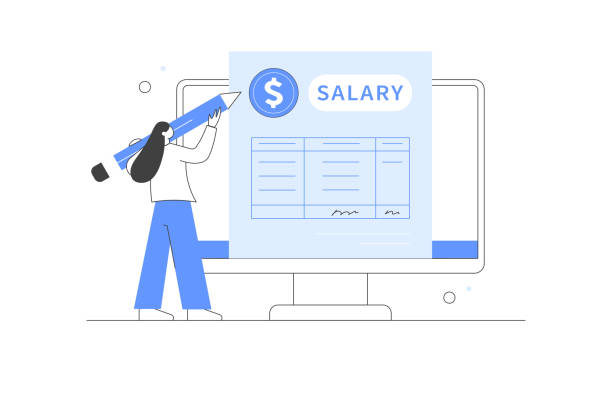
After implementing an SEO-optimized website design and executing various strategies, the next crucial step is performance monitoring and analysis.
Without accurate data and metrics, you cannot understand how successful your efforts have been or what areas need further optimization.
SEO analysis tools provide valuable insights into site traffic, keywords, page performance, and backlinks.
One of the most essential tools is Google Analytics.
This free tool from Google provides comprehensive information about your website visitors, including the number of visitors, pages viewed, dwell time, bounce rate, traffic sources, and even user demographics.
By analyzing this data, you can understand user behavior and identify your site’s strengths and weaknesses.
Another tool that complements Google Analytics is Google Search Console.
This tool is also free and helps you monitor your site’s performance in Google search results.
Search Console provides information about the keywords users searched for to find your site, your site’s average ranking for those keywords, indexed pages, crawl errors, and security issues.
This tool is essential for any SEO-centric website design.
In addition to these free tools, there are also paid and more powerful tools such as Ahrefs, SEMrush, Moz, and Majestic.
These tools offer more advanced capabilities in keyword research, competitor analysis, backlink monitoring, site technical health checks, and ranking tracking.
Using these tools, especially for larger businesses and SEO agencies, can create a significant competitive advantage and help you refine your SEO strategies more accurately and intelligently.
Continuous monitoring and updating the strategy based on data from these tools are key to sustained SEO success.
Here is a table of some key SEO metrics:
| SEO Metric | Definition | Importance for SEO-Optimized Website Design |
|---|---|---|
| Organic Traffic | Visitors who come to the site through search engines. | Indicates overall SEO success and increased visibility in search results. |
| Bounce Rate | The percentage of users who leave the site after viewing one page. | A lower rate indicates relevant content and good UX. |
| Dwell Time | The amount of time a user spends on a page before returning to the SERP. | More time indicates user satisfaction and content relevance. |
| Keyword Ranking | The site’s position for specific keywords in search results. | Evaluating the effectiveness of the keyword strategy. |
| Backlinks | Links from other sites to your site. | Indicates site credibility and authority. |
Common Mistakes in Website Design and Tips to Avoid Them
![]()
In the journey of SEO-optimized website design, avoiding common mistakes is as important as implementing best practices.
Even a small error can undermine your efforts and harm your site’s ranking.
One of the biggest mistakes is neglecting site loading speed.
Many designers prioritize visual beauty over speed, while users and search engines consider speed a critical factor.
Large and unoptimized images, heavy coding, and excessive use of scripts can severely reduce site speed.
Another common mistake is producing low-quality or copied content.
Google strictly deals with duplicate content or thin content and penalizes infringing sites.
Your content must be unique, comprehensive, and valuable to the audience.
Also, keyword stuffing, once an SEO technique, is now detrimental and makes the site appear unnatural and spammy to search engines.
Keywords should be naturally present in the text and meaningful to users.
Neglecting mobile SEO is a huge error in the current era.
As explained earlier, with Google’s Mobile-First Indexing approach, lack of responsiveness and optimization for mobile devices can be catastrophic.
Furthermore, not using an SSL certificate and HTTPS protocol not only compromises your site’s security but also damages its credibility in the eyes of Google and users.
Other mistakes include disorganized URL structures, lack of optimization for title tags and meta descriptions, weak or absent internal linking, and infrequent monitoring of SEO performance.
An SEO-optimized website design requires careful attention to these details and avoidance of these common mistakes.
By being aware of these points and adhering to them, you can prevent potential problems and pave the way for your website’s success.
Are your online sales not what you expect? With Rasaweb, solve the problem of low sales and poor user experience forever!
✅ Increase visitor-to-customer conversion rate
✅ Create an enjoyable user experience and build customer trust
⚡ Act now for a free consultation!
The Future of SEO-Optimized Website Design and Emerging Trends
![]()
The world of SEO is constantly evolving and what is effective today for SEO-optimized website design may not be tomorrow.
To maintain a competitive edge, you need to be aware of emerging trends and adapt to them.
One of the most important future trends is Voice Search.
With the increasing use of voice assistants like Siri, Google Assistant, and Alexa, search patterns have shifted from short keywords to complete and more natural sentences.
This requires optimizing content to answer direct and conversational questions.
Artificial Intelligence (AI) and machine learning are playing an increasingly important role in SEO.
Algorithms like RankBrain and BERT use AI to better understand user intent and page content.
This means that simply stuffing keywords is no longer enough; you need to create content that genuinely addresses user needs and has strong semantic relevance to the search topics.
E-A-T (Expertise, Authoritativeness, Trustworthiness) is another concept that Google increasingly values, especially for sensitive topics like health and finance.
Sites must demonstrate that their content is produced by experts and is trustworthy.
Core Web Vitals, a set of metrics related to the speed, interactivity, and visual stability of web pages, are also becoming important ranking factors.
These page experience metrics will play a pivotal role in future SEO-optimized website design and should be prioritized for optimization.
Additionally, content personalization based on location and user behavior, and a focus on Inclusive UX for all individuals, including those with disabilities, are other important trends.
The future of SEO is moving towards providing the best and most relevant experience to users.
Therefore, every SEO-centric website design must embed these principles at its core to be prepared for future challenges and remain at the top of search results.
Conclusion and Long-Term Strategy for SEO-Centric Website Design

Ultimately, SEO-optimized website design is not a one-time process, but a long-term and continuous strategy that requires constant attention and updates.
Success in SEO is the result of a combination of strong technical factors, high-quality and valuable content, excellent user experience, and a smart link-building strategy.
As detailed throughout this article, each of these components mutually affects the others, and neglecting any one can harm your overall efforts.
From loading speed and responsiveness to content quality and backlink authority, every element has its place in the SEO puzzle.
For a long-term strategy in SEO-centric website design, you should regularly review your site technically, keep your content updated, and produce new content that responds to the changing needs of your audience.
Continuous monitoring of site performance using tools like Google Analytics and Search Console is essential.
These tools help you identify new trends, pinpoint weaknesses, and adjust your strategies based on real data.
The online market is constantly changing; new competitors emerge, and search engine algorithms evolve.
Therefore, flexibility and readiness to adapt to changes are key characteristics of a successful SEO strategy.
Investing in SEO-optimized website design is, in fact, an investment in the future of your online business.
This not only helps you achieve higher rankings in search results but also leads to increased organic traffic, attracting more targeted customers, higher conversion rates, and ultimately, sustainable revenue growth.
In today’s competitive world, visibility is a highly valuable asset, and SEO is your primary tool to achieve this goal.
By following the principles and tips provided in this article, you can create a powerful and search engine optimized website that will also be successful in the long run.
Remember that SEO is a marathon, not a sprint, and its results are achieved with patience and continuous effort.
Frequently Asked Questions
| Row | Question | Answer |
|---|---|---|
| 1 | What is an SEO-optimized website? | It is a website designed and developed following Search Engine Optimization (SEO) principles to achieve a higher ranking in search results. |
| 2 | Why is having an SEO-optimized website important? | It increases visibility, attracts organic traffic, boosts conversions, and builds brand authority, all of which contribute to business growth. |
| 3 | What are the key elements of SEO-optimized website design? | Technical SEO (speed, mobile compatibility), On-Page SEO (keywords, content), User Experience (UX), and website security (HTTPS). |
| 4 | How does website speed affect SEO? | Faster sites improve user experience, reduce bounce rates, and are favored by search engines, leading to better rankings. |
| 5 | Is mobile compatibility important for SEO? | Absolutely. Google uses mobile-first indexing, so responsive design for mobile is crucial for ranking. |
| 6 | What role does content play in SEO-optimized website design? | High-quality, relevant, and keyword-optimized content is essential for attracting users and signaling relevance to search engines. |
| 7 | What is keyword research and why is it important? | Finding popular search terms people use. This process helps align content with user intent and attracts relevant traffic. |
| 8 | How is User Experience (UX) related to SEO? | Good UX (easy navigation, readability) keeps users on the site longer, reduces bounce rates, and sends positive signals to search engines. |
| 9 | What is a Sitemap and how does it help SEO? | It is a file that lists all pages of a site. It helps search engines crawl and index your site more effectively. |
| 10 | Should I use HTTPS for my website? | Yes, HTTPS provides security and is considered a minor ranking factor. It also increases user trust. |
And other services of Rasaweb Advertising Agency in the field of advertising
Smart SEO: A fast and efficient solution for increasing website traffic with a focus on attractive UI design.
Smart SEO: Revolutionize click-through rates with the help of attractive UI design.
Smart SEO: A dedicated service for increasing website traffic growth based on intelligent data analysis.
Smart Conversion Rate Optimization: An innovative platform for improving click-through rates with an SEO-centric content strategy.
Smart UI/UX: Designed for businesses looking to increase website traffic through precise audience targeting.
And over hundreds of other services in the field of internet advertising, advertising consultation, and organizational solutions
Internet Advertising | Advertising Strategy | Advertorials
Sources
SEO Website Checklist
What is Technical SEO?
Website Design Principles
Content Marketing Strategy
? To elevate your business in the digital world, Rasaweb Afarin Digital Marketing Agency, specializing in secure website design and SEO, offers innovative and effective solutions.
📍 Tehran, Mirdamad Street, next to Central Bank, Kazeroun South Alley, Ramin Alley, P.O. Box 6

